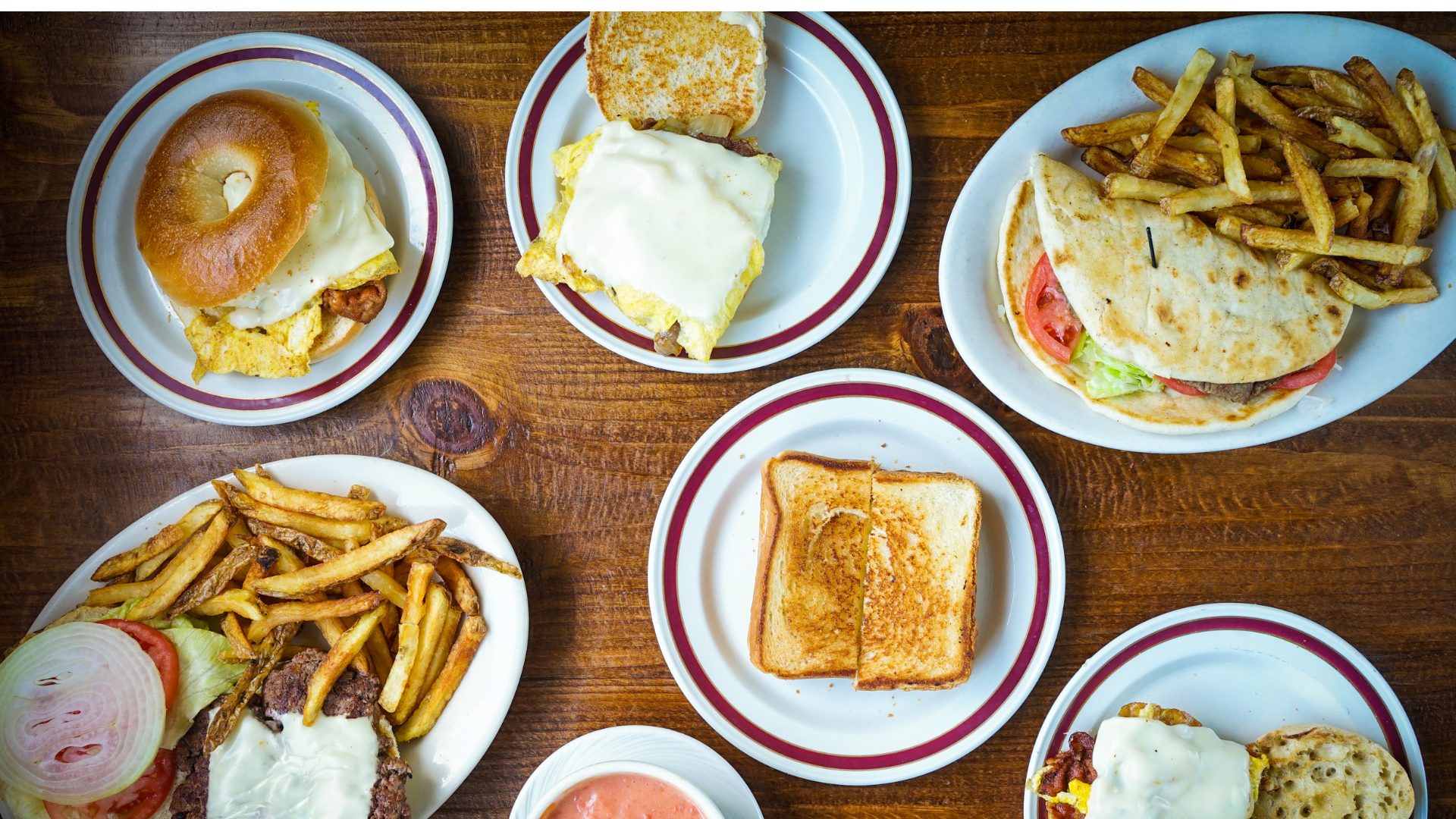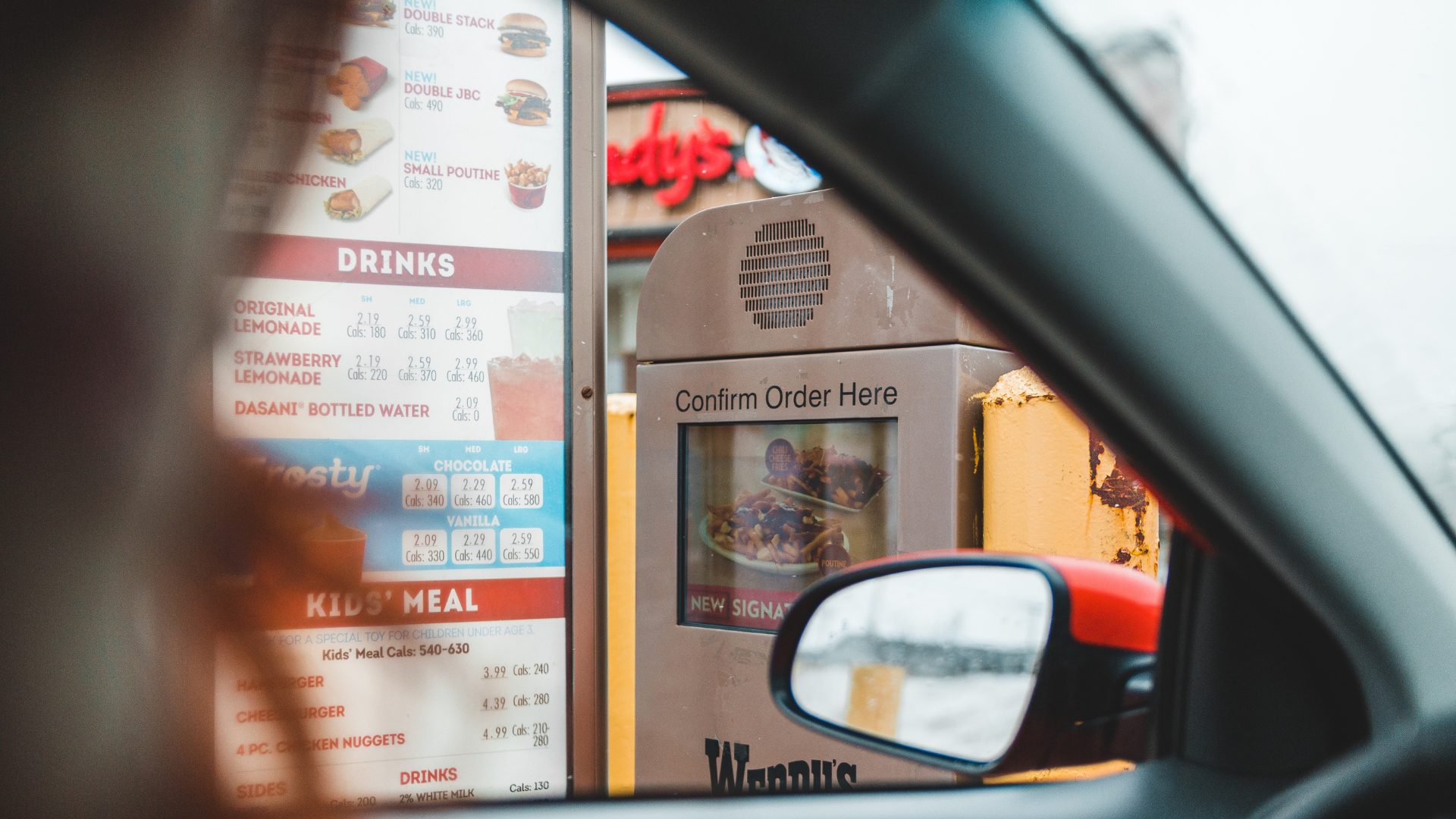When was Grimace “born?”
In November 1971, McDonald’s debuted Evil Grimace, a purple monster with four arms that he used to steal shakes, hoarding them underground like Gollum and his Precious. A year later he debuted again as Grimace, this time with a standard set of limbs, still purple, less hostile, amiable if a little aloof. In 2010, a McDonald’s spokesperson said he was a sentient taste bud, and a 2014 tweet from McDonald’s described him as the “embodiment of a milkshake or a tastebud” according to “Grimace lore,” from wherever that ancient grimoire of the Arches resides. And this summer, McDonald’s ran a promotion for his (its?) 51st birthday, which TikTokkers turned into a bizarre, often hilarious, occasionally horrifying trend of post-Grimace-shake pandemonium, leaving Grimace well-wishers often smeared in purple neon light and sticky congealing shake detritus while sprawled under overpasses, floating down streams, or even being dragged offscreen from the scene of the Grime.
At one point, the #GrimaceShake and #HBDGrimace were the top trends on Twitter and TikTok, spurring thousands (tens of thousands?) of shake sales every day. Zooming out a bit, the McDonald’s marketing department created a fairly milquetoast promotion in the Grimace Birthday Meal, but combined with the wild alchemy of organic, consumer-generated content, the confetti (and sales dollars) truly fell; instead of toddlers begging Mom and Dad for a Grimace meal, the world’s most recognizable restaurant found sales spurred by tweens, teens, influencers, and more who needed the shake to make the video and participate in one of the more memorable marketing zeitgeists of the mobile, meme-able era.
The promotion worked; in the second quarter, McDonald’s same-store sales grew a whopping 11.7%. On a July earnings call, McDonald’s CEO Chris Kempczinksi said, “This quarter, if I’m being honest, the theme was Grimace,” and beneath the aw-shucksian statement to investors, Kempczinski was 100% accurate—the Grimace Birthday Meal absolutely dominated, deliciously.
How? And why? And what can brands learn from it?
The Curious Case of the Grimace Shake
It is often said that art imitates life, and it should also be said that Grimace was conjured up by a marketing department as one of many characters to represent McDonald’s and to sell food to children and their families, so though he may qualify as art, higher existential questions regarding Grimace’s Promethean origins (and his birthday) are best left alone. Five decades later, nobody—least of all McDonald’s—could have predicted the not strictly PG circumstances poor Grimace was subjected to in June. If 100 marketing departments came up with 100 ideas, it is not certain they’d have hit upon something as inane, as harmless, as downright funny, disturbing, as weird and wondrous and wildly successful as the Grimace Shake horror videos and the sales boon that followed. For it was not the Grimace Birthday Meal alone that drove sales and pleased investors; it was the unexpected support via TikTok and YouTube.
And to make a Happy Birthday Grimace video, one needed a Grimace Shake.
“The market reflects the current culture, which plays a huge role into how these brands ultimately decide to make any changes,” said David Triana, account executive at PR firm Delight Labs. “In turn, especially with apps like TikTok, mascots can cause a brand and/or their message to go viral. As we’ve seen with Grimace this summer, a mascot can create a trend and make it spread like wildfire.”
“Traditionally, food mascots have had identifiable motivations and back stories,” said Brian Brown, president and chief creative officer at Ingredient, to The Food Institute, liking ambassadors such as Lucky the Leprechaun (Lucky Charms) and Trix Rabbit (Trix) to Wile E. Coyote, say, and the Road Runner.
“Other mascots are reimagined”—as Grimace was 50 years ago—”in a more irreverent way. Irreverence and irony are attributes that resonate with millennials and Gen Z in particular,” Brown added.
That Grimace’s irreverence was reimagined so vividly helped drive the Grimace Birthday Meal wholly without the addition of any McDonald’s-endorsed Grimace ads that mentioned or even came close to the Grimace horror videos. Here’s a wild fact about that: per new data from MediaRadar, McDonald’s overall U.S. ad spend had fallen 19% year-over-year to $156 million, driven largely by cuts to TV spend. The virality of the Grimace Shake, however, helped counterbalance the decrease, ensuring McDonald’s stays top-of-mind with its customers.
And when its customers do the work of the marketing team for them, brands like McDonald’s can prosper.
Not Just a Shake—An Identity
What’s most curious about the Grimace Shake is that the mascot didn’t create the trend; it merely provided the sugary-good, besprinkled medium. And as July belonged to Barbie, June surely belonged to Grimace. Grimace is an amorphous blob; Barbie is and has always been whatever a child wants her to be. Both, in other words, are perfect mediums for summer fun on which the values of the culture can be imprinted. In Grimace’s case—and the case with the #GrimaceShake horror videos—those values were harmless, delicious fun. That consumers associated those with Grimace, of all characters—and with McDonald’s as a whole—speaks purple-tinted volumes about its place in our culture and the outsize influence McDonald’s wields in the food/bev space.
“What works is creating a connection with the audience and, if it’s a long-established brand, not shying away from nostalgia,” Triana continued. “What doesn’t work, especially in the case of a mascot, is creating something that is offensive or insensitive, and doesn’t accurately represent the brand’s message or values.”
One of the most fascinating aspects about the Grimace Shake and the nostalgia-fueled millions McDonald’s raked in is that the movement was fueled by a nostalgia for a character many of the creators didn’t grow up with, at least not in the sense that children of the 70s, 80s, and 90s did. And McDonald’s, to its credit, simply let the sprinkles fall where they may—if that meant all over the sidewalk in the dark next to another spilled shake, well, consumers always knew where to get another one. And to Triana’s point, most of the videos were explicitly not offensive or insensitive; bizarre, yes, beguiling, surely, but often with the same sensibility—this is fun. We’re having fun. A trip to McDonald’s to get a Grimace Shake is fun, and no marketing department could have pushed that kind of content in the organic, radical, wildfire way that it spread from the consumers themselves. Like the setup to a knock-knock joke, we all knew the direction the videos were headed. That the punchlines were as creative as they were lent further power to the punch; always a shake, spilled; always a laugh, had.
“For marketers in the F&B space, humor must be taken in stride and brands have to be ready to respond quickly to potential spikes in trends (even if they are not what you expected),” said Bianca Hanson, marketing director at Uncorked Creative, to The Food Institute.
“Mars retired their M&M ‘spokescandies’ only to quickly bring them back. Why? Their recognizable, friendly nature was too important to bury,” she added. “Planters retired Mr. Peanut only to replace him with another peanut because who is Planters without their nutty mascot? Having a mascot that makes consumers laugh and hit ‘share’ can be a saving grace in the oversaturated market.”
Looking back, the Grimace Shake really had it all, and did it all, for McDonald’s. It lent credence to some of the brand’s oldest ambassadors and to the values they represent; it captured the imaginations of consumers young and old, new and experienced; it went viral in the way few corporate products do; most importantly, the Grimace Shake crusade was led by consumers in the name of farce and not by marketers in the name of consumerism. Since there’s no accounting for taste, the Grimace Shake achieved, in many ways, Susan Sontag’s description of camp, as the masses “[turned their backs] on the good-bad axis of ordinary aesthetic judgment;” consumers simply associated the frissons of hilarity with a berry-flavored shake that proffered outsize value to those who bought it and hit record, churning the engines of American commerce at the end of what is hopefully a season of inflation, frustration, and for many consumers and businesses alike, economic strife.
“The connoisseur of Camp [finds pleasure] in the coarsest, commonest pleasures, in the arts of the masses,” Sontag wrote. Is there a better description for contemporary social media—and the Grimace videos that live in perpetuity—than that? In this case, McDonald’s was the beneficiary from the viral arts of the masses and Grimace the purple, profitable portrait from and on behalf of McDonald’s. And like controversial art and wildfire food trends, nobody saw it coming.
And it might not even be over. To capture the future, McDonald’s is once again looking to the past. Fresh off Grimace’s birthday and its Q2 earnings report, McDonald’s announced it will test a spinoff restaurant, CosMc’s, in a handful of sites in early 2024. More plans will be revealed at its investor day in December. CosMc was a McDonaldland mascot who appeared in the 80s and 90s, an alien who craves McDonald’s food.
Audacious, sublime, organic—these are the hallmarks of profit for brands wise enough to be confident in their values and lucky enough to thread the needle between quality-controlled seriousness and edge-of-the-internet frivolity. One only wonders what will happen as Halloween (and the beginning of Q4) approaches and what next summer’s earnings report will hold for the golden arches.












